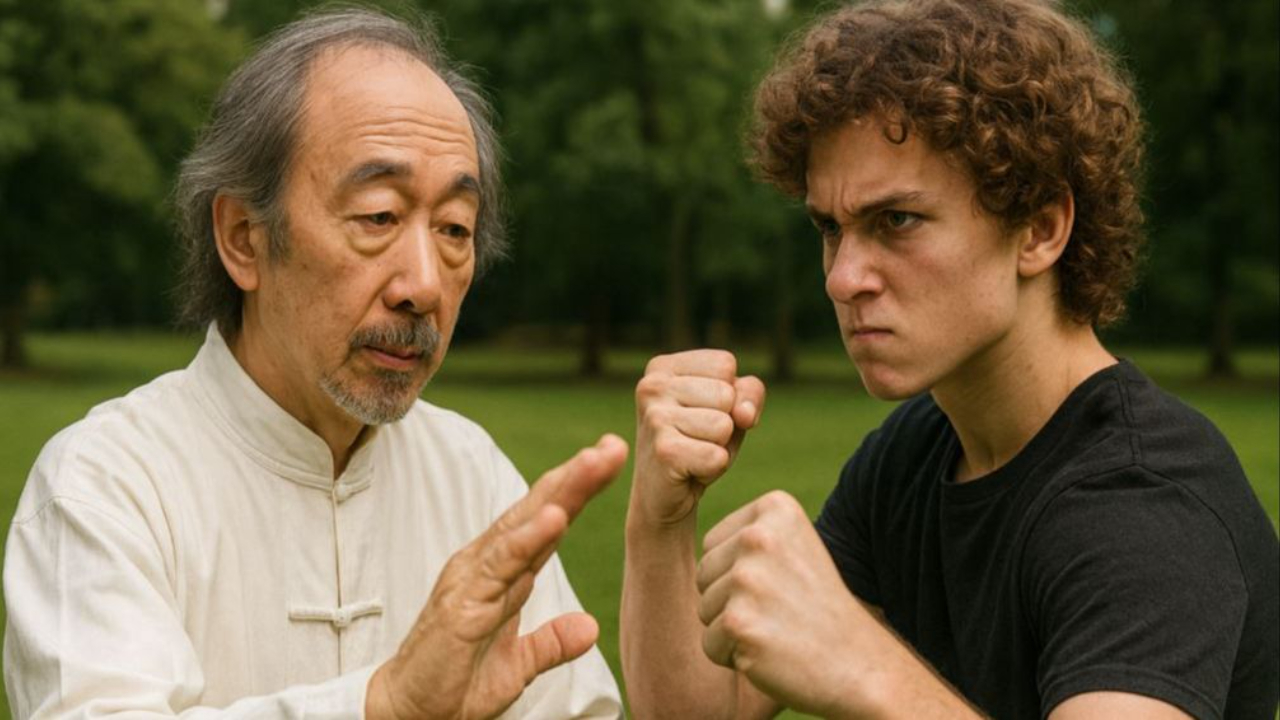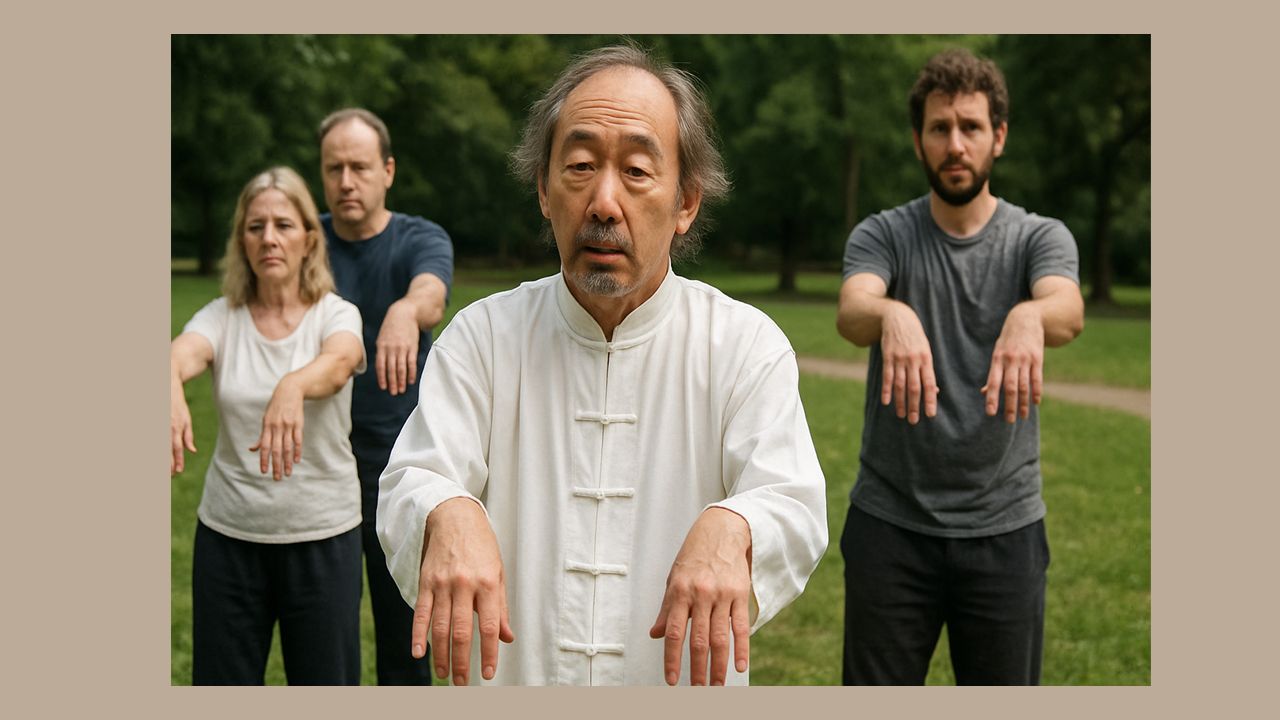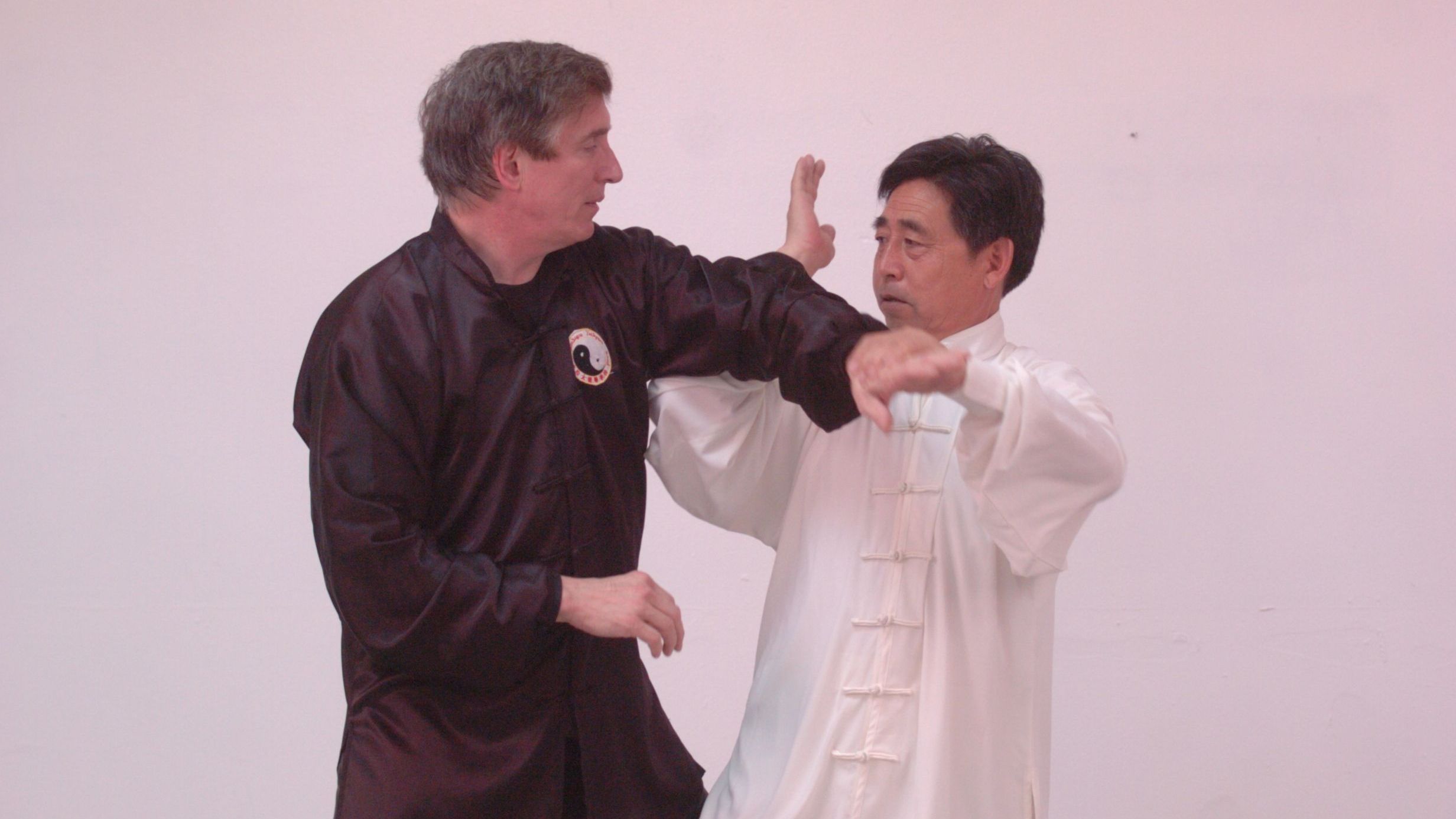The Tai Chi Uniform - Should You Wear "Silk Pajamas" or Not?

Have you ever seen some of the snide comments made online by some internal arts people who slam those who wear a uniform when taking photos or videos? They refer to the uniform in a derogatory way as "silk pajamas."
I always wonder why people feel the need to do that. It seems a bit immature, and sometimes comes off simply as mean-spirited. It is not exactly the nature that Taiji is supposed to develop in people, is it?
I wear a uniform when I do photos and instructional videos. When I watch an instructional video by another teacher, it always looks more professional when they are in a uniform than when they are in a Budweiser t-shirt and sweat pants. But that's just my opinion.
In recent years, I have worn a black and white uniform that was inspired by a wonderful documentary called Chen Village, by Jon Braeley. If you haven't seen it, and you are into Taiji, I highly recommend it.
In the documenta...
A Hypothetical Conversation with a Martial Arts Student

“How long does it take to get a black belt?” asked the prospective student.
“Five seconds,” said the teacher.
“Really?”
“Yes. All I have to do is hand it to you. But it takes much longer to earn one.”
"Maybe I can earn it faster than most people."
"Well, we don't do black belts. We do sashes, and a black sash doesn't mean very much, really. We only have those because in America, people seem to need it. A black sash doesn't really mean anything."
"It means you are deadly," the student said.
The teacher laughed. "No. It means you have just begun to learn. There are a lot of black belts who know very little and can do even less."
“Oh. Well, I want to be able to use Taiji to fight.”
“Why?”
The student asked, “If I am in a bar and get attacked, will I be able to use Taiji to fight?”
“You can use Taiji to stay away from a bar where fighting may occur,” said the teacher.
“Have you ever had to use Taiji in a fight?”
“No.”
“How about Bagua or Xingyi?”
“No. I have not been in a re...
Listening Energy - Ting Jin - A Crucial Taiji Concept for Self-Defense

There are many "energies" (Jin) in Taijiquan. The term "energy" has been misinterpreted by some people who take the translation too literally. The word "energy" when applied to Taiji simply means a physical method of sensing and dealing with your opponent's force in a way that follows core internal strength principles.
The most important energy in Taiji is Peng Jin. That is the expansive feeling that fills the body and pushes outward. When you touch an opponent, Peng Jin is necessary to test your opponent, "feel" and respond to your opponent's force and the direction that force is going. But the ability to be sensitive to your opponent's force and direction is Listening Energy, or "Ting Jin."
I once belonged to a school where we were taught that if we stood in front of our opponent, if we just worked hard and gained a high level of skill, we could actually "read" his chi -- we could read his mind and know that he was going to attack us even before he made a physical move.
Well, bull...
How to Develop Weak Tai Chi

I read a blog post this week by a well-intentioned (I assume) person who teaches Tai Chi and calls it the "art of gentle movement," a description that misses the essence of Tai Chi. Let's forget for a moment that Tai Chi fighters were often hired to guard caravans and train the men in villages to fight. Let's just forget that.
The author of this article says that by doing Tai Chi, you can feel the universe flowing through you and you can achieve enlightenment.
Here is an excerpt from this article that was titled "Entering the Quantum Era of the New Energy":
"Tai Chi Chuan finds it place back amongst the most powerful ways to become a condensed person that has clarity of mind, health of body and emotional countenance. It is said that the real meaning of the martial art is the cradle of enlightenment, that it is about self-discovery through a state of being that allows the universe to flow through the empty space between the particles and that this state brings a higher consciousness ...
Butt Out -- What it Means to "Tuck the Tailbone" in Taijiquan

In the practice of the internal arts, you're supposed to relax the hips. Sometimes it is said that you should "tuck the tailbone."
I prefer to use a different description.
Relax the lower back.
Here are two photos. The first one shows a common posture that I see in beginning students -- the butt sticks out in postures such as Single Whip.The second photo shows a more "centered" tailbone. The lower back is relaxed.
When most of us stand up, our lower backs are tense. They are concave, bowing inward toward the navel. But when you work on the body mechanics that are essential for quality internal arts (Taiji, Xingyi and Bagua) you learn to relax the lower back.
When I teach this, I have students put a hand firmly on my lower back. I stand normally. They can feel it bow inward. Then I relax and the lower back "fills up." At the same time, the hips drop down and inward. By relaxing the lower back, you are "tucking the hips," and no tension is required.
Relaxing the lower back is ...
Tai Chi Chuan or Taijiquan - Pinyin versus Wade Giles

I'm making the switch.
When I began teaching the internal arts, I considered whether to write "Tai Chi" or "Taiji."
On mainland China, Taiji (or Taijiquan) is the accepted translation style, known as pinyin.
Tai Chi (or T'ai Chi Ch'uan) is the Wade-Giles method of translation, developed by two men (Wade and Giles).
In 1997, I chose to use Tai Chi because that is the spelling most commonly known. That's the spelling you saw in newspapers and magazines such as T'ai Chi magazine. When I advertised my classes, I wanted the general public to see the ad and understand what "Tai Chi" meant. I didn't think they would understand that "Taiji" was the same thing.
It was purely a marketing decision, even though I knew that "serious" practitioners of the art used the term Taiji.
In recent months, I've started using both terms in my writing, and you might still see a Tai Chi pop up for search engine reasons, but for the most part, I'm changing the way I spell the art to Taijiquan, or Taiji.
...What Does "Jin" Mean When Talking about the 8 Energies of Taijiquan?

The Chinese language is complex to Westerners, and some of the terms of the internal arts such as Tai Chi, Hsing-I and Bagua are misinterpreted because of the way the words are translated. As a result, the internal arts are often described as "mysterious" or "mystical." That makes them seem out of reach. It harms our practice and our understanding, and these injuries are self-inflicted.
In Taiji, there is a concept known as the "energies," that include peng (ward off), lu (roll back), ji (press), an (push), etc.
The most important of all these is peng jin -- peng energy. It is one of the key elements of every movement, even when you step. You should never lose peng, and that is something that I see missing when I meet Tai Chi students, particularly those who have not studied Chen style. If you have studied Taiji and your teacher hasn't stressed and shown you how to maintain peng in all movement, you should be asking some serious questions about the quality of what you're learning.
S...
An Editorial -- We Need to Dispense with the Tai Chi Fantasy in the National Magazines

There has always been a strange willingness in the national Tai Chi and Kung-Fu magazines to print fantasy as if it is fact. They have shown frauds and con artists posing as "chi masters" knocking people down without touching them. Anyone with an ounce of intelligence or reasoning skills understands that this can't happen. Yet the magazines allow almost anyone to claim the most miraculous of powers.
In the two recent issues of Tai Chi magazine, there have been photos that are absolutely impossible to achieve in real life unless you have a partner who is willing to bend the truth and play along on your behalf.
Anyone who has ever been in a real fight knows that another man who is motivated does not generally go down easily, and when adrenalin is flowing, sometimes he doesn't even feel pain as he normally would.
So the magazine prints articles written by students with photos showing their teachers demonstrating impossible feats of "chi." The student/writer plays along in the photograp...
There is No Such Thing as Easy Tai Chi

Grandmaster Chen Xiaowang was teaching a workshop in the U.S. when one of the students commented about how difficult tai chi is.
If you've ever attended a workshop by a member of the Chen family, you understand why the comment would be made. Students hold postures while the instructor walks around the room, correcting each student individually. By the time he gets to you, your legs are often shaking with fatigue, and if he puts you into the correct posture, you may just collapse to the floor (photo at left shows Chen Xiaowang correcting me during a private lesson a few years ago).
This is one of the reasons I get annoyed when I see online ads that promise "easy tai chi." I'm sorry, my friends, there is no such thing. Fake tai chi might be easy. The health type of tai chi for "moving meditation" might be easy. Tai Chi for senior citizens might be easy.
Real tai chi is very difficult and takes years of practice to even begin to see proper body mechanics.
So when the comment was made ...
What Are the Six Harmonies in Tai Chi, Hsing-I and Bagua?

A member of the online school asked a question on the discussion board and I thought it would also make for a good post here on the blog.
What are the Six Harmonies and what does it mean? Does it mean the hands move with the feet, the elbows move with the knees and the shoulders with the hips?
Some people say the Six Harmonies are:
1. Shoulders
2. Hips
3. Elbows
4. Knees
5. Hands
6. Feet
So the shoulders harmonize with the hips, the elbows with the knees, the hands with the feet.
That isn't the complete story, however. These three groups of two (hips/shoulders, elbows/knees, hands/feet) make up the THREE EXTERNAL HARMONIES.
The other three harmonies that make up the six harmonies would include Yi (Mind/Intent, which is frequently paired with "Shen" or Spirit), Chi (Energy), and Li (Strength, pronounced "Lee"). These are known as the Three Internal Harmonies.
The "Shen leads the Yi," the "Yi leads the Chi," and the "Chi leads the Li (strength)."
You must have a strong spiri...

